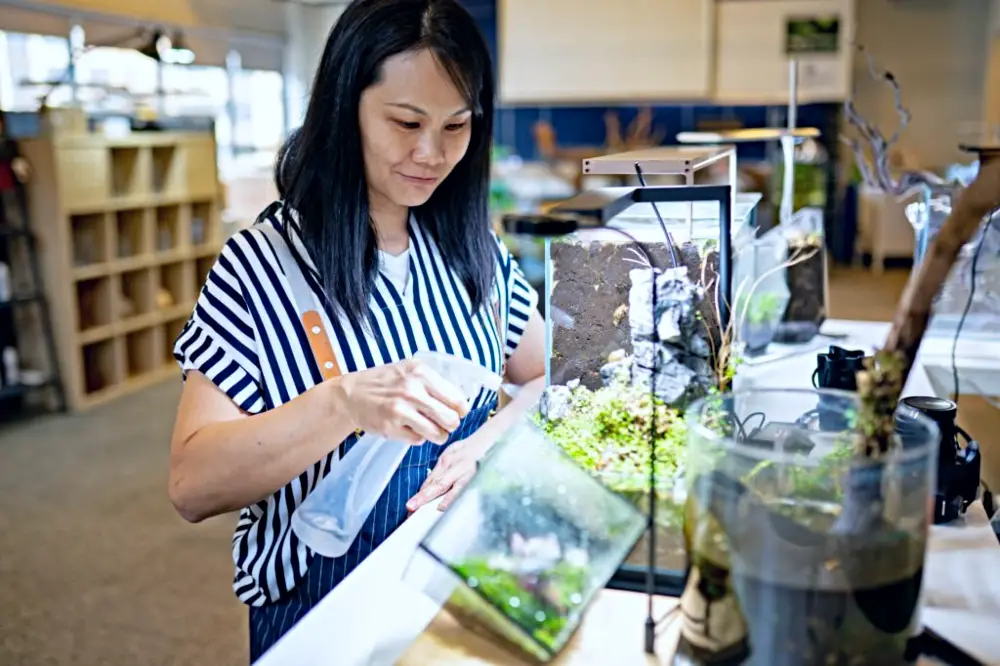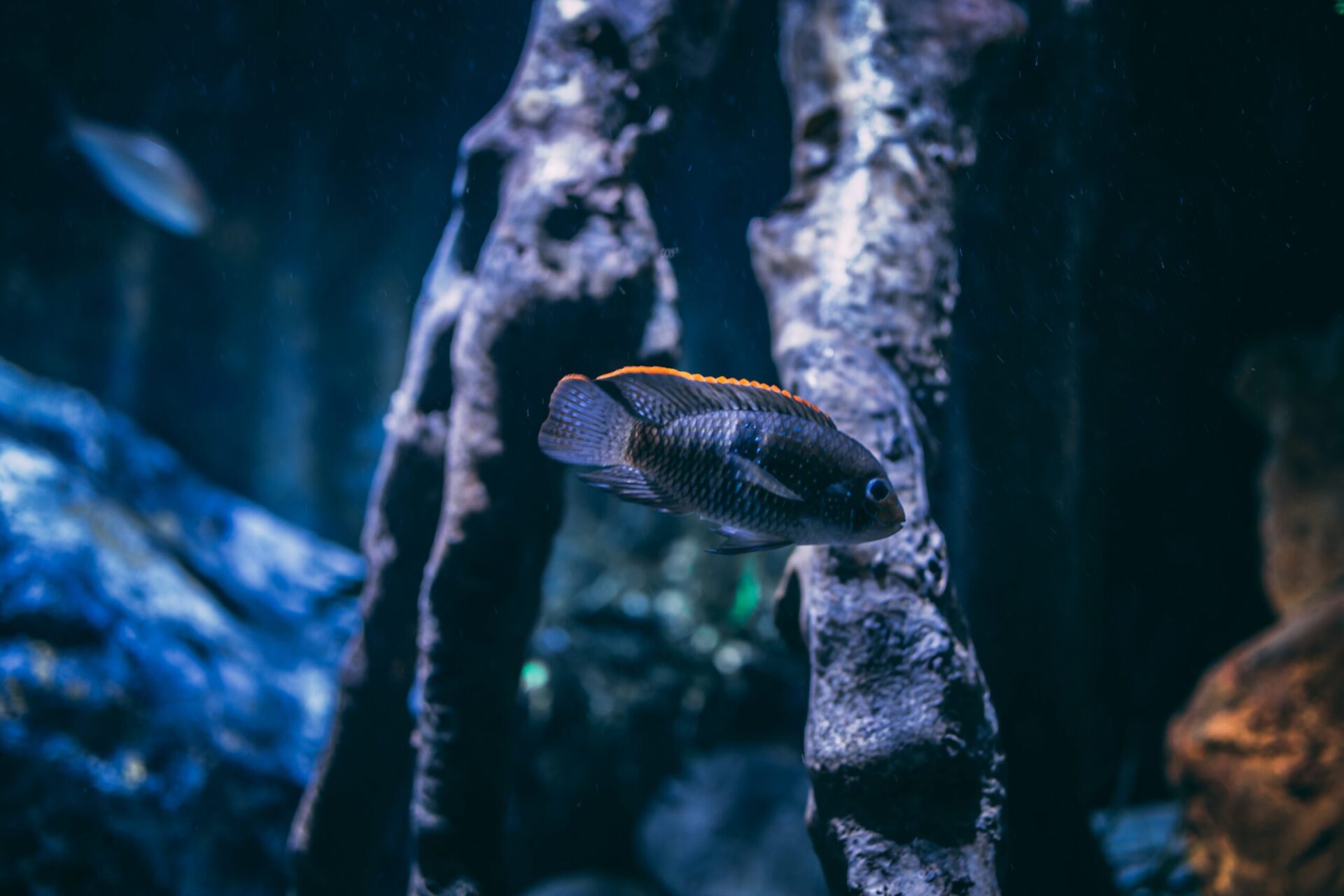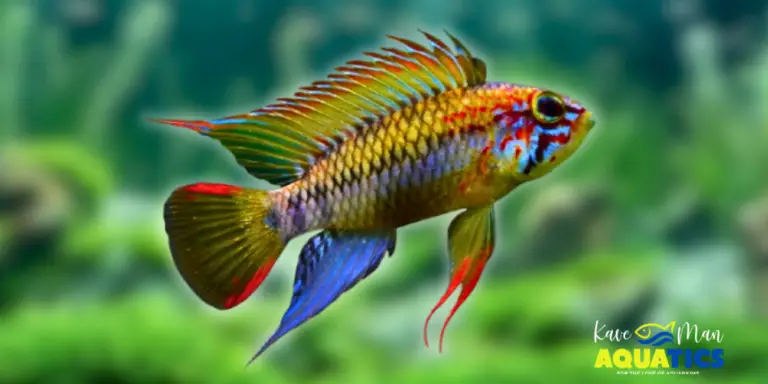5 Essential Steps to Kickstart Your Freshwater Aquascaping Journey
Are you ready to dive into the captivating world of freshwater aquascaping? Whether you’re a fish-keeping newbie or an enthusiast looking to enhance your aquatic paradise, this blog is your ultimate guide.
Freshwater aquascaping, the art of creating stunning underwater landscapes, has gained immense popularity among beginners for its beauty and tranquility. In this step-by-step journey, we’ll unveil the secrets of successful aquascaping, providing you with essential tips and techniques to bring your aquatic dreams to life.
What Is Freshwater Aquascaping?
Freshwater aquascaping is the art of designing and arranging plants, rocks, wood, and other elements in your aquarium to create a stunning underwater landscape. This creative process goes beyond just keeping fish — it allows you to transform your aquarium into a captivating work of art.
Freshwater aquascaping offers several benefits for fish-keeping enthusiasts.
- Aesthetic appeal: Freshwater aquascaping enhances the aesthetic appeal of the aquarium, transforming it into a captivating piece of living art. The carefully arranged plants, rocks, and other elements create visually stunning underwater landscapes.
- Natural habitat: Aquascaping provides a natural habitat for fish and plants, promoting their well-being and reducing stress. The plants improve water quality by absorbing toxins and providing oxygen.
- Creativity and self-expression: Additionally, aquascaping allows for creativity and self-expression, as hobbyists can showcase their artistic skills and create unique designs. It brings a sense of tranquility and fulfillment, making the aquascaping journey an enjoyable and rewarding experience.
Basic Aquascaping Principles

To embark on a successful freshwater aquascaping journey, it’s essential to understand the basic principles that form the foundation of this art form. These principles will guide you in creating a visually stunning and balanced aquatic environment.
- Simplicity: Keep your aquascape clean and uncluttered. Avoid overcrowding the tank with too many elements. Embrace negative space to enhance the overall aesthetics.
- Variety: Incorporate a diverse selection of plants, colors, shapes, and sizes. This creates visual interest and mimics the natural diversity found in underwater ecosystems.
- Proportion: Maintain balance and harmony by arranging elements in proportionate sizes. Avoid placing large objects in one area while leaving others empty. Strive for a visually pleasing composition.
- Persistence: Aquascaping is an ongoing process. Regular maintenance, pruning, and monitoring are necessary to keep your aquascape healthy and thriving. Be patient and make adjustments as needed over time.
By applying these basic aquascaping principles, you’ll be on your way to creating a captivating and vibrant freshwater aquascape that brings joy and beauty to your fish-keeping journey.
Aquascaping Styles
When it comes to freshwater aquascaping, there are various styles you can explore to bring your aquatic vision to life. Each style has its own unique characteristics and requires different design techniques. Let’s delve into some popular aquascaping styles:
- The Dutch aquarium: Known for its vibrant and colorful plant arrangements, the Dutch style focuses on dense planting with a variety of leaf shapes, sizes, and colors. It aims to create a lush and well-maintained garden-like appearance.
- The Iwagumi style: Originating from Japan, the Iwagumi style emphasizes simplicity and the use of rocks as the main focal point. It often features a single prominent stone (Oyaishi) surrounded by a minimalistic layout of carefully arranged plants.
- The Nature Aquarium style: Pioneered by Takashi Amano, this style seeks to replicate natural landscapes. It combines carefully selected plants, hardscape elements like driftwood and rocks, and an artistic sense of balance to create visually stunning underwater panoramas.
- The Jungle style: This style aims to recreate a dense, wild, and natural-looking underwater jungle. It involves using fast-growing plants, driftwood, and rock formations to create a chaotic yet visually appealing aquascape reminiscent of a lush forest.
Exploring these freshwater aquascaping styles will help you discover your preferred aesthetic and guide you in selecting the appropriate plants, hardscape materials, and layout techniques for your freshwater aquascape. Remember, experimentation and personal creativity are key to finding your own unique style!
Step-by-Step Aquascaping Tips

Ready to dive into the world of freshwater aquascaping? Follow these step-by-step aquascaping tips to get started on your aquatic masterpiece. From planning your layout to selecting the right plants and adding the finishing touches, we’ll guide you through the process.
Step 1: Planning Your Aquascape
The first step in creating your stunning aquascape is proper planning. Let’s dive into the essential aspects of this crucial step:
- Choosing the right tank size and shape: Consider the space available in your home and the species you plan to keep. A larger tank provides more room for creativity and a stable environment for your aquatic life.
- Selecting a theme or style for your aquascape: Explore different aquascaping styles like the Nature Aquarium or Iwagumi. Find a theme that resonates with you and matches the desired atmosphere for your underwater landscape.
- Researching and gathering inspiration: Immerse yourself in the world of freshwater aquascaping by researching online, browsing aquascaping books, and joining forums. Take inspiration from successful aquascapes to fuel your creativity.
Remember, planning lays the foundation for a successful aquascape. Consider the tank size, choose a captivating theme, and let your imagination flow.
Step 2: Setting Up Your Aquarium
Setting up your aquarium is a crucial phase that sets the stage for your aquatic masterpiece. Let’s dive into the key elements of this important step:
- Selecting the appropriate equipment and supplies: Choose a reliable filter, heater, lighting system, and a high-quality CO2 system if necessary. Consider the needs of your chosen aquascape style and the specific requirements of your aquatic plants and fish.
- Installing substrate and hardscape materials: Carefully place the substrate, such as nutrient-rich soil or gravel, as the foundation of your aquascape. Arrange hardscape materials like rocks or driftwood to create focal points, define paths, and provide natural hiding spots for fish.
- Adding driftwood, rocks, and decorations: Incorporate driftwood to add natural beauty and create visual interest. Place rocks strategically to create caves or elevations. Select decorations that complement your chosen theme, such as ornaments or aquatic plants.
Remember to consider the compatibility of your chosen materials with the specific needs of your aquatic life.
Step 3: Selecting and Planting Aquatic Plants
This step is where the magic happens as you bring life and vibrant greenery into your underwater masterpiece. Let’s dive into the key aspects of this important process:
- Understanding different types of aquatic plants: Familiarize yourself with the various categories of aquatic plants, such as foreground, midground, and background plants. Learn about their growth habits, light requirements, and care needs to make informed choices.
- Choosing suitable plants for your aquascape: Consider the specific requirements of your chosen aquascape style, such as the desired height, color, and texture. Select plants that thrive in your aquarium’s conditions, ensuring they are compatible with your lighting, substrate, and water parameters.
- Planting techniques and considerations: Prepare your plants by trimming any damaged or excessive growth. Plant them gently into the substrate, ensuring the roots are well-covered but not buried too deeply. Maintain proper spacing between plants to allow for healthy growth and prevent overcrowding.
Remember to research the growth rates of your chosen plants and plan accordingly for future maintenance.
Step 4: Adding Plants
This step is where the magic happens as you bring life and vibrant greenery into your underwater masterpiece. Let’s dive into the key aspects of this important process:
- Understanding different types of aquatic plants: Familiarize yourself with the various categories of aquatic plants, such as foreground, midground, and background plants. Learn about their growth habits, light requirements, and care needs to make informed choices.
- Choosing suitable plants for your aquascape: Consider the specific requirements of your chosen aquascape style, such as the desired height, color, and texture. Select plants that thrive in your aquarium’s conditions, ensuring they are compatible with your lighting, substrate, and water parameters.
- Planting techniques and considerations: Prepare your plants by trimming any damaged or excessive growth. Plant them gently into the substrate, ensuring the roots are well-covered but not buried too deeply. Maintain proper spacing between plants to allow for healthy growth and prevent overcrowding.
Remember to research the growth rates of your chosen plants and plan accordingly for future maintenance. Selecting and planting aquatic plants is a key step in creating a lush and visually stunning aquascape.
Step 5: Maintenance and Care
Now, let’s dive into the fifth and final step: Maintenance and Care. Regular upkeep is vital to keep your aquatic masterpiece thriving. Here’s what you need to know:
- Establishing a water care routine: Monitor water parameters like temperature, pH, and ammonia levels regularly. Perform partial water changes, typically 10-20% weekly, to maintain water quality. Use a reliable water conditioner and test kits to ensure optimal conditions for your fish and plants.
- Proper lighting and CO2 management: Adjust your aquarium lighting to provide the appropriate spectrum and duration for your plants’ needs. If using CO2 supplementation, maintain optimal levels to support plant growth while avoiding excessive algae growth. Monitor and adjust lighting and CO2 as needed based on plant health and algae control.
- Pruning and trimming aquatic plants: Regularly trim and prune your plants to promote healthy growth and maintain the desired aquascape aesthetics. Remove any dead or decaying plant matter to prevent water quality issues. Use suitable tools like scissors or tweezers to carefully trim and shape your plants.
By establishing a consistent water care routine, managing lighting and CO2, and maintaining your aquatic plants, you’ll ensure a thriving and visually captivating aquascape.
Troubleshooting and Problem-Solving
As you embark on your freshwater aquascaping journey, it’s essential to be prepared for some common challenges that may arise along the way. Let’s explore a few troubleshooting tips and problem-solving strategies to help you overcome these obstacles:
- Algae growth: Algae is a common concern in aquariums. To combat it, ensure proper lighting duration and intensity, as excessive light can promote algae growth. Maintain a regular water change schedule to control nutrient levels. Introduce algae-eating fish or invertebrates like snails or shrimp to help keep algae in check.
- Water quality problems: Poor water quality can lead to various issues. Test your water regularly for parameters such as ammonia, nitrite, nitrate, and pH. Perform regular water changes to maintain optimal conditions. Use a reliable water conditioner to remove harmful chlorine and chloramines.
- Plant health issues: If your plants show signs of yellowing leaves, stunted growth, or melting, it could indicate nutrient deficiencies or improper CO2 levels. Consider supplementing essential nutrients through liquid fertilizers or root tabs. Adjust CO2 levels based on the needs of your plants, ensuring they receive adequate carbon dioxide for photosynthesis.
- Fish health and behavior: Pay attention to any unusual behavior or signs of stress in your fish. Ensure proper water temperature, appropriate tank mates, and a balanced diet. If health issues arise, research common fish diseases and consult a veterinarian specializing in fish care.
- Aquascape imbalance: If you feel your aquascape lacks balance or visual appeal, consider adjusting the placement of hardscape materials, plants, and decorations. Create focal points, utilize the rule of thirds, and strive for harmony between different elements in your aquascape.
Now, of course, you might run into some issues with your freshwater aquascaping setup — like decorations floating out of their spots, for example. Here’s our own experience with it and how we fixed it:
Remember, troubleshooting and problem-solving are integral parts of the aquascaping journey. Stay observant, be proactive in addressing issues, and don’t hesitate to seek guidance from experienced aquascapers or online communities. With time and patience, you’ll overcome these challenges and create a breathtaking aquatic masterpiece. Happy aquascaping!
Unleash Your Freshwater Aquascaping Potential — Dive into Creativity with KaveMan Coaching!
Mastering the art of freshwater aquascaping is within your reach! By following the 5 essential steps and incorporating the step-by-step aquascaping tips shared in this guide, you’re well on your way to creating a stunning underwater paradise. Remember to plan your aquascape, select suitable equipment, choose the right plants and fish, and establish a proper maintenance routine.
Don’t be afraid to unleash your creativity and experiment with different styles and themes. The joy of freshwater aquascaping lies in the journey of discovery and the satisfaction of seeing your creation thrive.
If you’re looking for personalized guidance and expert support, consider reaching out to KaveMan Aquatics for their 1-on-1 coaching services.
Now, dive in and let your imagination flourish as you bring the beauty of nature into your home through the captivating world of freshwater aquascaping.
-
5 Essential Steps to Kickstart Your Freshwater Aquascaping Journey
Embark on your freshwater aquascaping journey with our step-by-step tips. Unleash your aquascaping potential — dive into creativity with KaveMan coaching!







